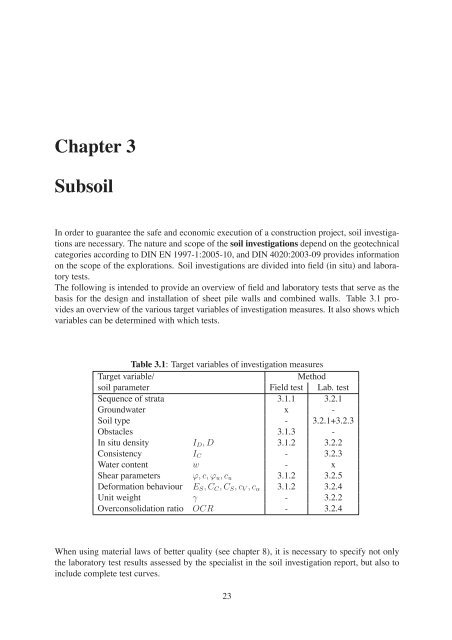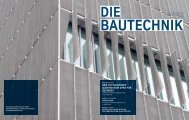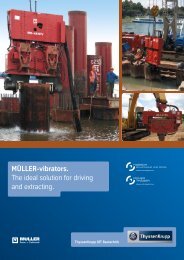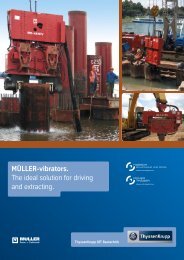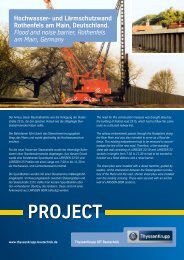pdf (3.6 MB) - ThyssenKrupp Bautechnik
pdf (3.6 MB) - ThyssenKrupp Bautechnik
pdf (3.6 MB) - ThyssenKrupp Bautechnik
You also want an ePaper? Increase the reach of your titles
YUMPU automatically turns print PDFs into web optimized ePapers that Google loves.
Chapter 3<br />
Subsoil<br />
In order to guarantee the safe and economic execution of a construction project, soil investigations<br />
are necessary. The nature and scope of the soil investigations depend on the geotechnical<br />
categories according to DIN EN 1997-1:2005-10, and DIN 4020:2003-09 provides information<br />
on the scope of the explorations. Soil investigations are divided into field (in situ) and laboratory<br />
tests.<br />
The following is intended to provide an overview of field and laboratory tests that serve as the<br />
basis for the design and installation of sheet pile walls and combined walls. Table 3.1 provides<br />
an overview of the various target variables of investigation measures. It also shows which<br />
variables can be determined with which tests.<br />
Table 3.1: Target variables of investigation measures<br />
Target variable/ Method<br />
soil parameter Field test Lab. test<br />
Sequence of strata 3.1.1 3.2.1<br />
Groundwater x -<br />
Soil type - 3.2.1+3.2.3<br />
Obstacles 3.1.3 -<br />
In situ density ID,D 3.1.2 3.2.2<br />
Consistency IC - 3.2.3<br />
Water content w - x<br />
Shear parameters ϕ, c, ϕu,cu 3.1.2 3.2.5<br />
Deformation behaviour ES,CC,CS,cV ,cα 3.1.2 3.2.4<br />
Unit weight γ - 3.2.2<br />
Overconsolidation ratio OCR - 3.2.4<br />
When using material laws of better quality (see chapter 8), it is necessary to specify not only<br />
the laboratory test results assessed by the specialist in the soil investigation report, but also to<br />
include complete test curves.<br />
23


